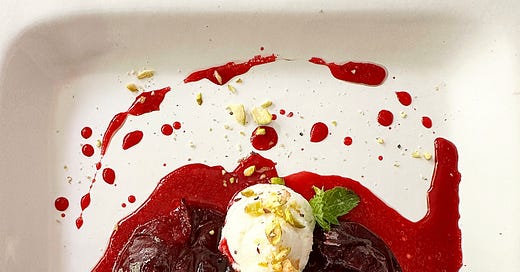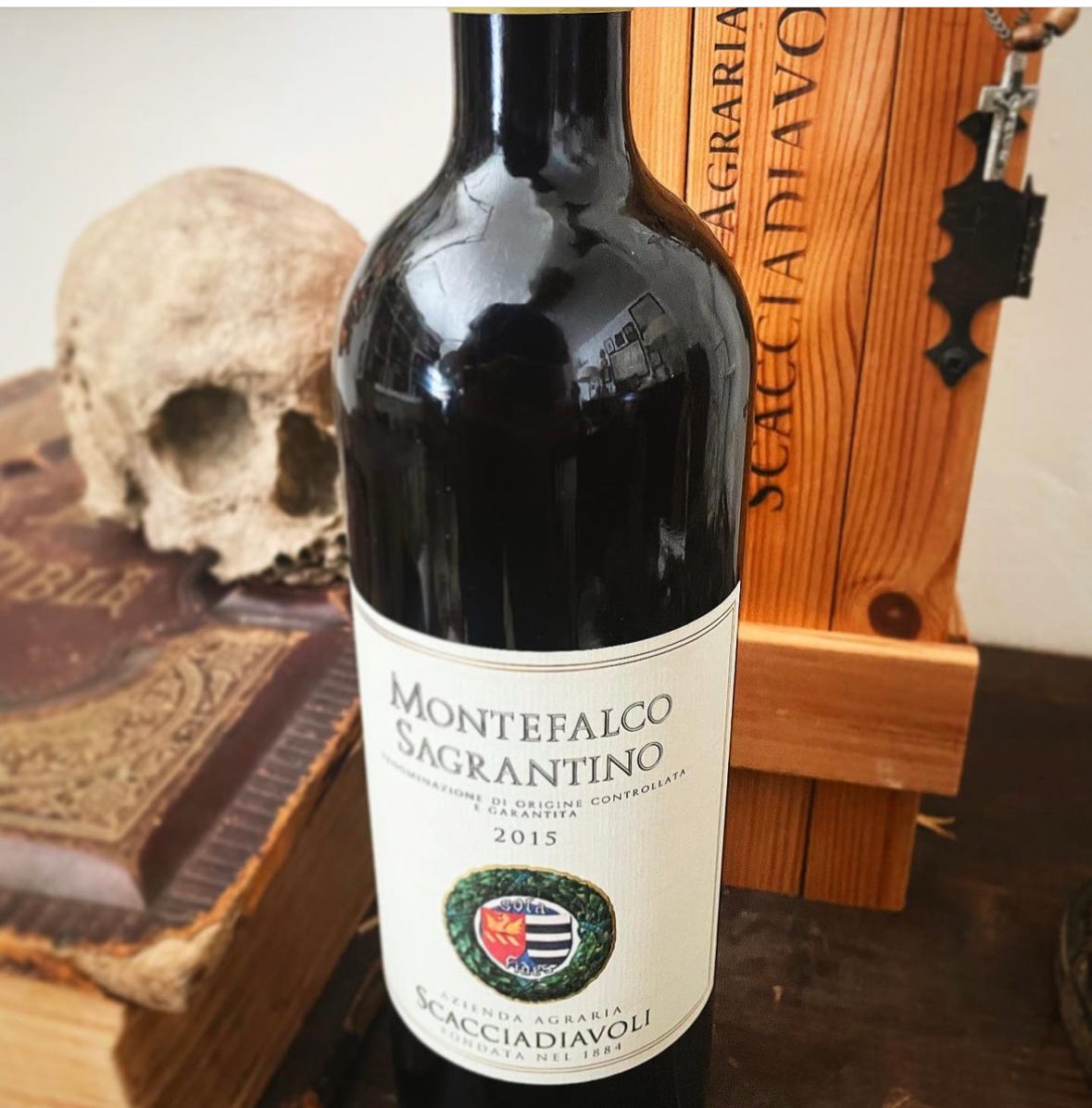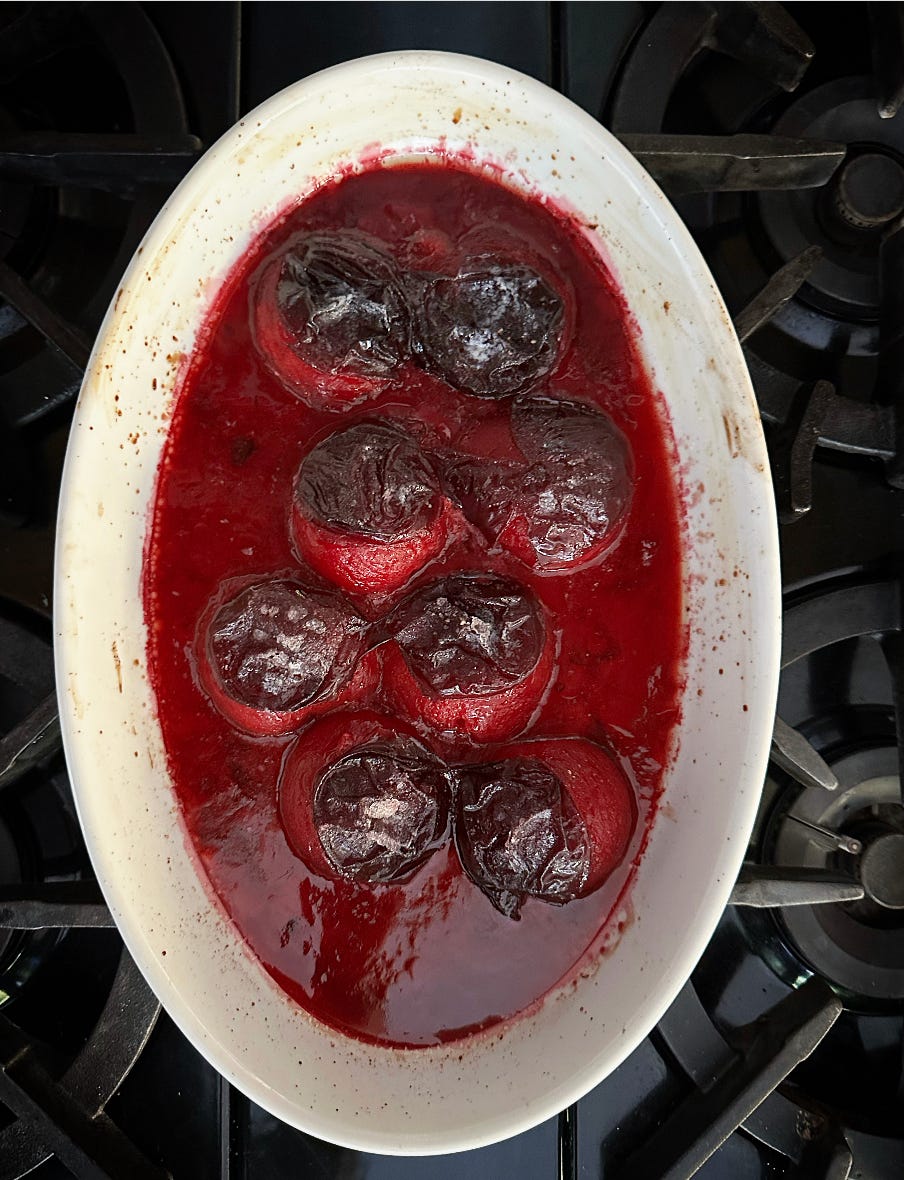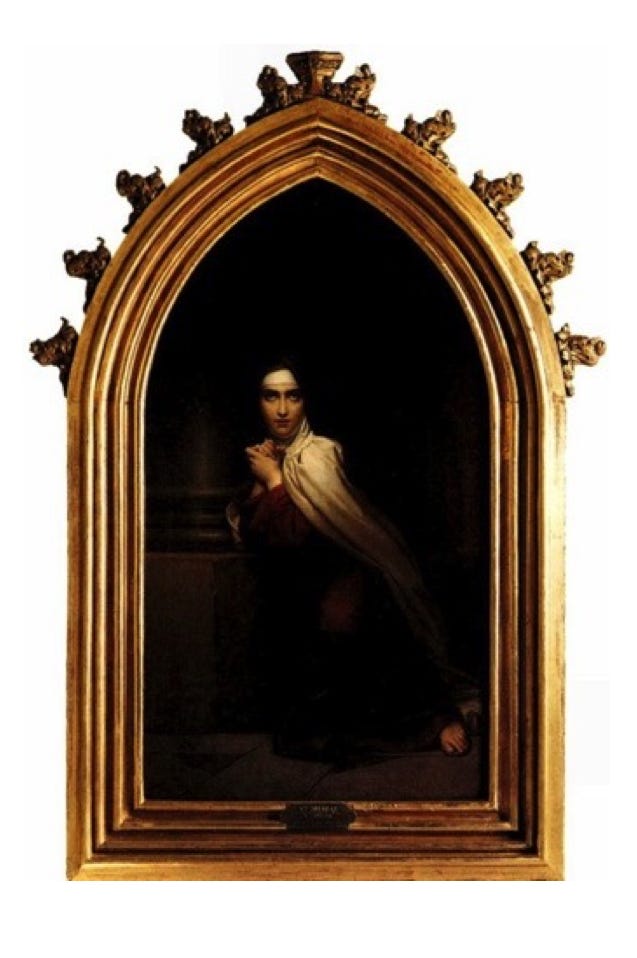Santa Rosa plums are called Coscia di Monaca or “Nun’s Thigh” all over Italy, clearly an example of an imagination ‘gone South’. No doubt some well-meaning and faithful young soul let the thoughts of earthly delights get the better of them, apparently unconcerned with any spiritual consequences such thoughts might invoke.
The tart, deep purpled skin of the fruit is reminiscent of a Carmelite nun’s midnight-blue cassock, while the sweet, blushing pink flesh inside clearly becomes what we are only meant to imagine (or not meant to, perhaps!) is hiding underneath those vestments of chastity. Add some flowing whipped ricotta, heavy cream or vanilla-bean ice cream down the center and, well, I’ll stop here for fear of the above-mentioned consequences.
The fruit itself is sinfully delicious when enjoyed ripe off the tree, but as with other stone fruits, the flavors concentrate even more when baked, creating a syrup both tart and aromatic. The use of black pepper in pastries goes back to the early renaissance, often in the kitchens of the poor to bring life to meager dishes. And yet the hints of spicy pepper in this dish along with the reduced red wine and natural juices of the fruit is both exotic and very sophisticated.
While any dry red wine will do, I just happen to have a glass or two leftover from last night’s dinner that is beyond appropriate.
Scacciadiavoli, literally translated as “ Devil Banisher”, is one of the oldest wine productions in Umbria. It is made from 100% Sagrantino grapes in and around the small medieval hill town of Montefalco,
The name comes from the legend of an exorcism carried out in the 17th Century. The story goes that a young woman was thought to be possessed by the devil (though nothing survives in the records as to what the symptoms were for such a prognosis) and was made to drink some of the local red wine by the monks of Montefalco. This succeeded in driving away the devils inside her, and the wine was henceforth known as the Devil Banisher.



There is also talk of a local exorcist who lived in the nearby caves and sprinkled the wine over victims of demonic possession.
Scacciadiavoli is a rich and complex wine, densely colored, almost black ruby red, with notes of leather and vanilla. Full-bodied, yet elegant and balanced, it is an ideal accompaniment to red meats and roasts, especially on All Hallow’s Eve!
This recipe for Coscia di Monaca was one I helped develop with my dear friend and mentor, the late great Carlo Middione, after sending me to do a bit of espionage in Umbria where he had first discovered it. It is safe to say, as for all things Italian, it starts with him.
THE RECIPE:
Keep reading with a 7-day free trial
Subscribe to CHESTER HASTINGS - The Recipes to keep reading this post and get 7 days of free access to the full post archives.












